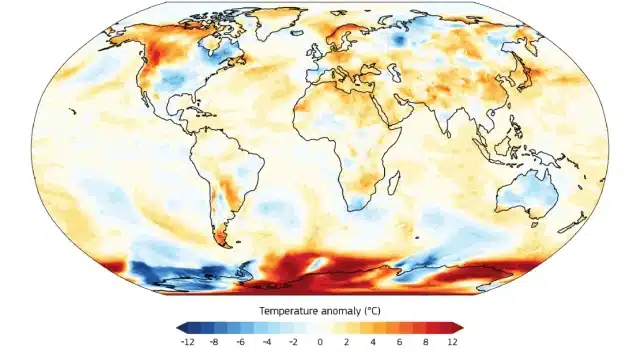Sunday was the Warmest Day ever recorded, based on preliminary data from a climate monitoring agency tracking temperatures since the mid-1900s. This marks the second consecutive year of breaking global temperature records, driven by fossil fuel pollution.
On July 21, temperatures reached 17.09°C (62.76°F), the highest since at least 1940, according to the European Union’s Copernicus Climate Change Service.
Read more: Scientists Have Found That Climate Change Is Causing Days To Become Longer
Typically, global temperatures peak during the Northern Hemisphere’s summer, from late June to early August. The record comes amidst severe heatwaves worldwide, with many U.S. cities and parts of southern Europe experiencing unprecedented temperatures.
The current warmth is the highest seen in at least 100,000 years, based on climate data from ice cores and coral reefs. Sunday’s temperature exceeded the 2023 record by just 0.01°C.

What’s striking is that global temperatures were about 0.3 degrees cooler before 2023. Carlo Buontempo, director of Copernicus, noted that we are in unprecedented times, with future records likely to be set as the climate continues to warm. Buontempo described these recent records as “truly staggering” and emphasized that new highs are expected as warming persists.
Global temperatures fluctuate due to natural factors like seasons, climate patterns, and solar activity, as well as human-induced factors such as fossil fuel pollution, which is driving temperatures up.
Last year’s record was attributed to the combination of the El Niño climate pattern and fossil fuel emissions, which trap heat. This year’s record, occurring as El Niño fades and transitions to its cooler La Niña phase, highlights the impact of human-induced climate change.
The sudden rise in temperatures is also linked to unusual heat in large areas of Antarctica, a concerning trend due to the continent’s potential for causing severe sea level rise.









